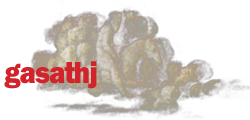Kobane#3 for cello and interactive system
Kobane is an interactive composition originally created by Nicola Baroni for an Augmented Bass Flute and premiered in Bologna in November 2015. On the occasion of the XXII Generative Art Conference held in Rome in December 2019 a new version of the work performed with the cello by the author was presented, integrating an original approach to the generation of music scores in real-time in relation to the performance and interactive analysis of melodic fragments mainly coming from the Persian collection Radif. Kurdistan tragedies inspired the work, evolving through a conflictual condition of the performer who engages timbral and melodic Persian motivic fragments alongside the contrasting feedback of the interactive electroacoustic sounds.
The composition, originally dedicated to Luigi Nono, lasts 10 minutes, mixing three groups of live electronics treatments scheduled inside a pre-determined timeline and interactively driven by the performer, who partially improvises by navigating the interactive scores evolving on the laptop screen. First of all the interaction is based on a detailed timbre feature extraction monitoring the live sound of the soloist in comparison with 10 sound models set in advance by the performer: the distance between the Bark Bands of the sounds actually played by the soloist throughout the performance compared to the bands of the pre-analysed sounds drives the spatial movements and several timbre evolutions of the electronics. In addition, deep spectral treatments of fragments coming from Nono’s choral works are highly influenced by the rhythmic structures and densities captured from the performance. The activity of the cello bow, monitored through an accelerometer, drives instead a quartet of harmonisers, live treating the cello sound itself. The central part of the work is ruled by an interactive score (microtonal and in common notation) which has to be sight read by the soloist, but which is at the same time produced by the soloist through the mediation of the digital sound analysis in real-time applied to the cello sound. At this point of the performance the Persian melodic fragments become crucial: the system selects and reshapes on the fly, 11 motivic fragments which have to be performed and varied by the soloist. The interactive score grabs the melodic shapes coming from the cello sound, live transcribing and expanding them by means of methods of motivic granulation, modulation and stretching which have to be sight read and navigated by the performer. Some analytical focus is given to the expressive time/amplitude deviations of the cellist from the written melodic Persian fragments: these captured expressive deviations are mapped and given to the score as a variable input driving the elaboration of new score variations.
The characters of the sound treatments are integrally dependent on music as improvised and sight read by the soloist, who is engaged in a multilayered action. The system offers the soloist the opportunity to deliberately drive multiple electronic sound qualities at the same time, integrating and networking different forms of multi-agent mapping.
In this way the performance actions of the cellist are the interface of the digital mappings through the mediation of specific models of analysis. The bow movements are detected, implementing schemes of Fourier analysis and standard deviation capturing patterns of iteration and continuity describing common bowing styles such as tremolo, balzato, legato, staccato. The sound analysis principally detects the density of rhythmic groupings inside short and long term boundaries, while timbre and extended technique sounds are monitored and compared through Bark Band analysis. The central part of the work, characterised by the live interaction against an animated and reactive pentagram score, develops instead a peculiar expressive mapping based on the live detection of performance accents and deviations from the neutral model represented by the written melodic fragments quoting the Radif.
A main target of the work is to interactively integrate live electronics with analytic concepts borrowed from systematic musicology, and to combine within a unique environment sound based electroacoustic approaches with symbolic and score based live treatments.
